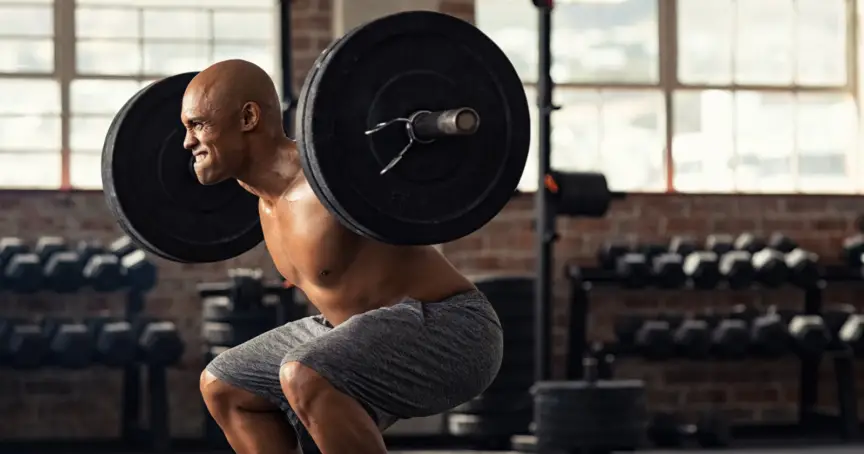ShoesandFitness.com is supported by our readers. We may earn a commission when you purchase through links on this page. Our content is checked for factual accuracy by our editorial team before being published.
Squatting is a crucial exercise for building strength, improving athletic performance, and achieving overall fitness goals. However, determining how much weight you should squat for your weight can be a challenge. In this article, I’ll provide you with a comprehensive guide on how much weight you should squat based on your weight and fitness level.
Understanding Your Squatting Capacity
Squatting capacity refers to the maximum weight you can squat while maintaining proper form. This is a combination of your physical strength and your ability to stabilize the weight during the movement. To determine your squatting capacity, it is essential to consider several factors, including:
Body weight:
Your body weight plays a significant role in determining your squatting capacity. The more you weigh, the more weight you will be able to lift.
Fitness level:
Your fitness level, including your muscle strength and endurance, will also impact your squatting capacity.
Training experience:
The amount of time and effort you have invested in training and practicing squats will also determine your squatting capacity.

Determining Your Ideal Squatting Weight
To determine the ideal squatting weight for your weight, you should first assess your current fitness level and training experience. Based on this, you can use the following guidelines to determine your ideal squatting weight:
Beginner:
If you are new to squatting, it is recommended that you start with a lighter weight, such as your body weight or a light barbell. As you become more comfortable with the movement, you can gradually increase the weight.
Intermediate:
If you have been training for a few months, you can aim to squat a weight equivalent to your body weight.
Advanced:
If you have been training for over a year and have a solid foundation of strength, you can aim to squat a weight equivalent to 1.5-2 times your body weight.

Why Nike Blazers Are Good For Lifting
Best Power Cage and Racks For Your Home Gym
Improving Your Squatting Capacity
To improve your squatting capacity and reach your fitness goals, it is essential to incorporate squats into your regular workout routine. Additionally, consider incorporating the following tips into your training:
- Focus on proper form: Maintaining proper form during squats is essential for preventing injury and maximizing your results.
- Vary your exercises: Incorporating different squat variations, such as front squats and goblet squats, into your routine can help target different muscle groups and prevent boredom.
- Progressive overload: Gradually increasing the weight you squat can help you continue to build strength and reach your goals.
The Importance of Proper Form
Proper form is essential in squat lifting to avoid injury and ensure maximum effectiveness. When performing a squat, keep the following tips in mind:
- Stand with feet shoulder-width apart
- Keep your chest up and maintain a neutral spine
- Look straight ahead, not up or down
- Keep your weight in your heels
- Lower yourself as if you were going to sit back into a chair, keeping your knees in line with your feet
- Push back up through your heels to the starting position
- It is essential to practice proper form, even when using lighter weights, to build muscle memory and avoid injury.

Squat Standard Charts for Men and Women
Below you will find squat standards charts for men and women to use as a reference guide. Do pay attention to the different classifications, which there are detailed below…
Classifications:
Beginner – Stronger than 5% of lifters.
Novice – Stronger than 25% of lifters.
Intermediate – Stronger than 50% of lifters.
Advanced – Stronger than 75% of lifters.
Elite – Stronger than 95% of lifters.
Squat Standards for Men (kg) – By Bodyweight
| Bodyweight | Beginner | Novice | Intermediate | Advanced | Elite |
| 50 | 36 | 57 | 70 | 80 | 97 |
| 55 | 40 | 64 | 79 | 91 | 114 |
| 60 | 44 | 70 | 87 | 102 | 129 |
| 65 | 48 | 75 | 94 | 112 | 143 |
| 70 | 51 | 80 | 100 | 120 | 157 |
| 75 | 54 | 84 | 106 | 129 | 169 |
| 80 | 57 | 89 | 112 | 137 | 180 |
| 85 | 60 | 93 | 118 | 144 | 191 |
| 90 | 63 | 97 | 123 | 151 | 201 |
| 95 | 65 | 100 | 127 | 157 | 210 |
| 100 | 67 | 104 | 132 | 164 | 219 |
| 105 | 70 | 107 | 136 | 169 | 228 |
| 110 | 72 | 110 | 140 | 175 | 236 |
| 115 | 74 | 113 | 144 | 180 | 244 |
| 120 | 76 | 116 | 148 | 186 | 252 |
| 125 | 77 | 118 | 152 | 191 | 259 |
| 130 | 79 | 121 | 155 | 195 | 266 |
| 135 | 81 | 124 | 159 | 200 | 272 |
| 140 | 82 | 126 | 162 | 204 | 279 |
Squat Standards for Women (kg) – By Bodyweight
| Bodyweight | Beginner | Novice | Intermediate | Advanced | Elite |
| 40 | 20 | 40 | 58 | 73 | 91 |
| 45 | 21 | 43 | 61 | 77 | 98 |
| 50 | 22 | 44 | 63 | 80 | 105 |
| 55 | 23 | 46 | 65 | 83 | 111 |
| 60 | 24 | 48 | 67 | 85 | 117 |
| 65 | 25 | 49 | 68 | 87 | 122 |
| 70 | 26 | 51 | 70 | 90 | 127 |
| 75 | 27 | 52 | 71 | 92 | 131 |
| 80 | 28 | 53 | 73 | 93 | 135 |
| 85 | 29 | 54 | 74 | 95 | 139 |
| 90 | 29 | 55 | 75 | 97 | 143 |
| 95 | 30 | 56 | 76 | 98 | 147 |
| 100 | 31 | 57 | 77 | 100 | 150 |
| 105 | 31 | 58 | 78 | 101 | 153 |
| 110 | 32 | 59 | 79 | 103 | 156 |
| 115 | 33 | 60 | 80 | 104 | 159 |
| 120 | 33 | 60 | 81 | 105 | 162 |
Can You Wear Sweatpants to the Gym?
How Much Does a Leg Press Sled Weigh?
Squatting for Your Weight
Squatting is a valuable exercise for building strength, improving athletic performance, and reaching overall fitness goals. To determine the ideal squatting weight for your weight, it is essential to consider your body weight, fitness level, and training experience. By incorporating squats into your regular workout routine and focusing on proper form, you can continuously improve your squatting capacity and reach your fitness goals.

